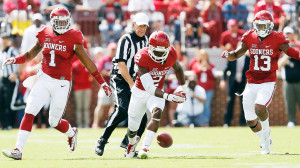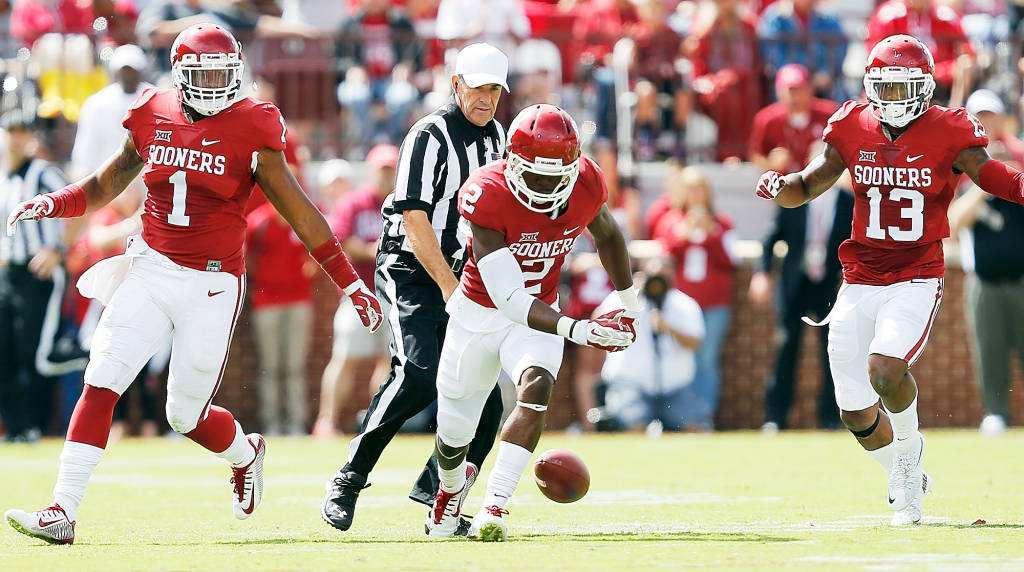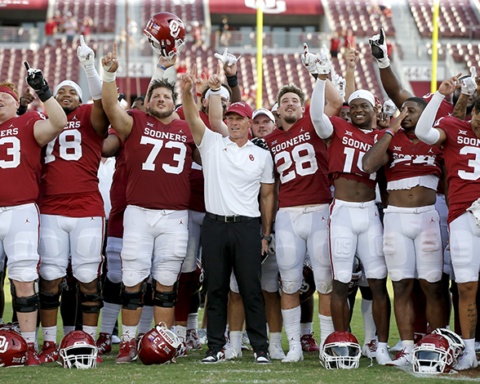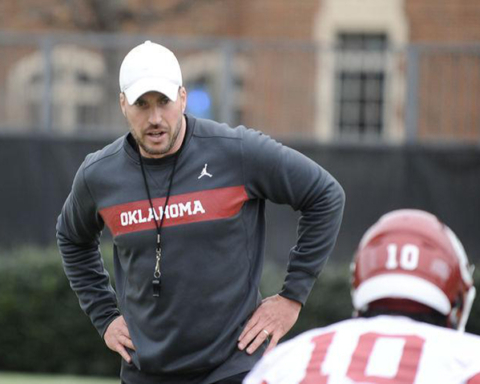 Two weeks ago, after the Akron game, I said that we would have to await the Tennessee game to see if Oklahoma deserved its then No. 19 ranking. I was wrong. Not because the answer from that game was in the negative but because we didn’t really get an answer.
Two weeks ago, after the Akron game, I said that we would have to await the Tennessee game to see if Oklahoma deserved its then No. 19 ranking. I was wrong. Not because the answer from that game was in the negative but because we didn’t really get an answer.
Now, after week-three and the game with Tulsa, we still don’t know if the Sooners are capable of playing with the big dogs. At least three questions remain.
First, what is the status of the offensive line? I think it fair to say that the O-line was pretty ineffectual against the Vols until the fourth quarter when its apparent better conditioning took over. Even then, one of the premier running backs in the country (Samaje Perine) wasn’t consistently sprung free. And, it’s not clear to what extent that’s because Lincoln Riley is still trying to learn how to use a top-rung running back in his air raid offense. Additionally, Mayfield was constantly scrambling.

We didn’t get a meaningful test against Tulsa either. Our starting center, arguably the most important position on the O-line, didn’t play and another starter saw very limited action, both due to injury. While the running game picked up, it was presumably against inferior talent. We’ll have to wait until the starting line is back together and see how they perform against big 5 talent in the Big 12 (-2).
Second, has there been any real improvement in the defensive backfield over recent disappointments? The answer to this question depends to some extent on the answer to the third question so let’s go there and come back to this one later.
Third, just how good is Tulsa any way? Tulsa, of course, ran the Baylor version of the air raid offense. After all, their coach was Baylor’s offensive coordinator last year. It was pretty effective Saturday. To some extent however, the air raid offense reminds us of the wishbone offense of the second half of the 1970s. Back then, many teams with decent, but not great, talent remained competitive against teams with better talent because of the wishbone scheme. Defenses hadn’t kept up with the intricacies of the option offense. It appears to me that the same kind of thing is true of the air raid offense. Especially if you have decent talent suited to the scheme.
I believe Tulsa has quality wide outs (who amongst us wouldn’t have taken them on the 2014 Sooners — especially after Sterling went down) and a decent quarterback well suited to the offensive scheme. They’re among the leaders in the nation in total offense (3rd) and passing offense (4th). I believe Tulsa’s offense was legitimate and, hence, could reasonably expect some success against a good defense.
Now back to question number 2. I question what seems to be the conventional wisdom that Zack Sanchez is a big-time corner back. Prior to the Tulsa game, it had seemed to me for the last year and two games, that he had never found a good balance between caution and risk taking. Perhaps it’s a Mike Stoops’ coaching decision, but Sanchez always plays back off the line of scrimmage a good 10 yards. Decent teams consistently throw the ball immediately to a wide-out who can then gain five yards before Sanchez can close the distance. Then, when teams try to go long on him, the receiver is up to speed before Sanchez knows which way to head or which area to roll into. He frequently tries to jump the route, occasionally with spectacular success, but all too frequently disasterously.
Not expecting much of interest in the Tulsa game, I decided to focus on Sanchez to see if my gut feelings were born out statistically.
Although a pretty good team in my estimation, Tulsa is still a WAC team. The total is more than 50 yards higher than Tulsa’s average against Florida Atlantic and New Mexico in its first two games.
Although a pretty good team in my estimation, Tulsa is still a WAC team. The total is more than 50 yards higher than Tulsa’s average against Florida Atlantic and New Mexico in its first two games.
The first thing that was evident, even to the point that the television commentators remarked on it, was that Tulsa wasn’t afraid to challenge Sanchez. They went right after him frequently and successfully from the start.
In the first half alone, I counted 11 passes thrown to Sanchez’s man or in his zone (assuming he didn’t have responsibility for the Tulsa receiver that caught the 28 yard TD pass with 13 seconds left in the first half which would have made it 12 passes). Eight of those passes were caught by the intended receiver, albeit one with the receiver having to go down on his knees to make the catch. Of the remaining seven catches, the receiver averaged a gain of 6 yards after the catch. Sanchez made the tackle only 3½ times. Of the three passes not caught, Sanchez jumped the route and broke one up, had good coverage causing an incompletion on another and was beaten but the ball was overthrown. Tulsa seemed to abandon concentration on Sanchez in the second half probably because they discovered the gapping hole left on the other side by the suspension of Jordan Thomas.
In all, Tulsa completed 34 passes for 427 yards for a average of 15.6 yards per catch and 8.3 yards per pass attempted. Although a pretty good team in my estimation, Tulsa is still a WAC team. The total is more than 50 yards higher than Tulsa’s average against Florida Atlantic and New Mexico in its first two games.
I suspect that the defensive secondary is not significantly better at this stage of the season than it has been for the last couple of years. If it doesn’t improve rapidly, we will be in for big trouble against TCU and Baylor. We may even be in trouble against (sacrilege) OSU. And, I think we would even have to wait and see against Texas and Texas Tech.
Here is an interesting final thought to leave you with. If the defense as a whole doesn’t improve over its performances of the last couple of years, will Bob Stoops fire his brother to save his job?
— Gary


 Follow
Follow


